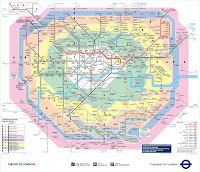
Scolvus (Jan z Kolna)
Portrait by: Artur Szyk
[Ed. Mythical] Explorer in service of Denmark. In 1476 he [supposedly] discovered the land of North America.
From: "Who's Who in Polish America" by Rev. Francis Bolek, Editor-in-Chief; Harbinger House, New York, 1943
SCOLVUS Joannes, Scolnus Joannes, Skolp Johannes in Poland popularly called Jan z Kolna [Jan of Kolno], a 15th century sailor who was to have reached North America in 1476, that is 16 years before Columbus. On the subject of this mysterious, not fully explained, and not fully researched personage there is a wide ranging, though controversial, body of literature. Even the name of the sailor and his nationality are not definitely known, though many foreign sources ‹ Spanish, Dutch, French, and Italian ‹ from the 16th to 18th centuries cite him to be of Polish origin. Among those authors are: F. de Belleforest, C. Wytfliet, J. I. Pontanus, C. B. Morisot, G. Horn, M. V. Coroneili, and F. de Charlecoix.
In the scientific works of the 16th and 17th centuries, and also on contemporary maps and globes, the name of this sailor appears in over 20 different versions such as: Scolvus, Scoluus, Scoluo, Scolus, Scolnus, Scolno, etc. It is impossible to establish the original version of the name without finding the primary source which was used by the authors in the 16th and 17th centuries, and which today is unknown. The first reports about this person most likely come from an unidentified Portuguese or Spanish source, not found to this day, and perhaps lost. This opinion is stated by, among others, F. Nansen in his Nebeheim (vol. 2, page 300).
The excellent Polish historian J. Lewelel rather freely, it seems, extracted from Johannes Scholnus the surname "Skolny" then "Szkolny" and finally "Jan z Kolna" which name then embedded itself in Polish histography, and even partly in that of other nations. This is the version of the name given by, among others, A. Humboldt and I. P. Magiodowicz. B. Olszewicz who devoted a thorough study to this personage, questions the Polish origins of this sailor. The Scandinavian authors G. Storn, S. Larsen and T. J. Oleson also question it strongly, they prefer to see him as a Scandinavian.
Storn and Larsen depreciate the information from the 16th and 17th century Spanish and Dutch authors who call the sailor a Pole. They put forth an unconvincing argument that the word "Polonus" is an error due to the misreading of the word "piloto." Larsen also accuses Lelewel, and there is some foundation to this, that he changed the name for patriotic reasons, but he himself does this as well, using a similar linguistic hypothesis and changing the name to "Skolp." He brings in a series of even more controversial ideas. Another Scandinavian author, H. Hermannsson, speaking of Larsen said that his "entire theory is built on such weak underpinnings that it is impossible to accept." The German author G. Frederici said that it "is full of hypothesis, possibilities, and likelihoods but without evidence." Finally the brilliant Soviet historian of geography I.P. Magidowicz makes the conclusion "There is no reason to reject the reports by two impartial writers -- a Flemish author in the 16th century and a Dutchman in the 17th -- about Jan's Polish origins."
Further out yet, in the field of linguistic speculation, is the Peruvian writer L. Ulloa who identifies Scolvus as Columbus. Similar hypothesis, which are based on lack of clarity in Columbus' biography, and also in the etymology of both names (Columbus for a time used the name Colon, which phonetically is similar to Kolno) are also put forth by modern writers.
It is impossible to mention all the theories, but on the basis of sources from the 16th and 17th centuries one can draw the following conclusions: about the year 1476 a sailor serving Denmark who had the name of Jan (nearly all sources agree on this), whose surname and nationality are not quite certain, was to have reached the shores of North America at a place that is not definitely specified (Baffin Island, Hudson Bay, Labrador?). Outside the mention of this in the literature of the 16th and 17th centuries, and even more so, on the globes and maps of that era, there are no documented details of the voyage. It seems that with the level of knowledge that exists no categorical statements on the subject can be made. The matter could perhaps be explained by conducting a detailed search through all Portuguese archives, and failing there the archives in Spain and England. To date nothing like this had been done. It is an unrefutable fact that several authors from the 16th and 17th centuries, that is sources close to the time of his voyage, called the sailor a Pole and this fact cannot be ignored. Up to the time that a search of the archives is conducted and a primary source found, the formulation any conclusions on the subject is risky and without basis. To this date the matter of Jan the 15th century sailor, whose surname is not quite certain; the supposed discoverer of America, is still open.



























